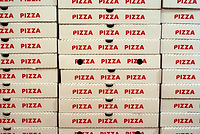Food Safety: A Flexible Packaging Checklist

According to management at Mondi in North America, packaging’s role in food safety has been growing as consumers eat more meals on the run and food is expected to remain safe in packaging for extended periods. Food companies that use flexible packaging should expect considerable support in the safety area from their packaging suppliers.
No supplier can guarantee that its package is suitable for every type of food product under all possible usage conditions. However, when food manufacturers and packaging specialists effectively collaborate, they usually can discover a successful solution. For that reason, it’s critical for both parties to maintain open communication lines and have a clear understanding of accountability for different aspects of food safety.
Food Safety Standards Compliance
“There are some key points to consider when assessing suppliers,” says Ross Bushnell, president, Mondi Jackson, Consumer Goods Packaging. “For example, flexible packaging facilities should meet globally recognized food safety standards. Some food/beverage manufacturers require that their flexible packaging suppliers are certified to standards approved by the Global Food Safety Initiative (GFSI). GFSI is an international organization that benchmarks food safety-related protocols in an attempt to harmonize them worldwide. An example of a GFSI recognized certification body is the British Retail Consortium (BRC).”
“The GFSI was put together to ensure food chain safety from the field to the consumer,” adds Dirk Sutherlin, Mondi Jackson’s director of integrated management systems and materials science. “The GFSI recognizes various certification bodies such as the BRC, which develops protocols for flexible packaging producers to implement. The BRC audits and certifies packaging suppliers to ensure they comply with the GFSI standards.”
Food producers should ask their flexible packaging suppliers for evidence of compliance with GFSI standards, including BRC audit and certification documentation. To be fully compliant, suppliers must ensure their systems, procedures, facilities and materials meet GFSI requirements. This includes hygiene, site security, manufacturing processes, raw material sourcing and many other factors.
Packaging Materials Selection
Bushnell adds that food manufacturers should expect their flexible packaging providers to deliver high-quality films that protect products during distribution and consumer handling, and provide a barrier against oxygen and water for shelf stability. “It’s a plus when the suppliers produce these materials and assemble packaging in-house, offering a single point of accountability,” he says.
Some leading pouch suppliers provide 100 percent inspection for all retort and hot-fill pouch orders. Every pouch is checked before it is shipped to the food manufacturer to confirm pouch integrity, including proper seals. Regardless of the flexible packaging type, all packages should contain tracking data to facilitate tracing an individual package back to its source if a quality problem arises.
Suppliers must be able to assure food companies that their flexible packaging products have the necessary regulatory compliance for the intended application. For example, the supplier should be able to provide documentation that all components used in the package are recognized by the U.S. Food and Drug Administration as safe for food contact products (subject to any noted provisions and use restrictions). A full understanding of food manufacturer requirements is crucial to selecting the correct materials for the package to ensure regulatory compliance for the intended application.
Packaging-related responsibilities reside on the food manufacturer’s side as well. For example, the food manufacturer is ultimately accountable for ensuring that food ingredients are compatible with a package’s substrates. Myriad factors related to food ingredients will influence packaging material selection. The packaging supplier can usually assist in making this assessment. Following are just a few considerations to keep in mind:
Will the food be sold frozen or at room temperature? Different packaging materials are suited to these specific environments. For example, a two-ply or even single-ply packaging material is typically suitable for frozen foods, whereas shelf stable foods require three or more plies and high-barrier properties to ensure adequate shelf life of the product.
Does the food have high-fat content? If they are not in proper packaging, high-fat foods have a tendency to migrate into some packaging substrates or cause delamination. Packaging suppliers can develop the right material structure and use proper adhesives to safely store high-fat products.
Is the food highly acidic, or does it require pasteurization or sterilization? If so, it may require a hot-fill retort pouch, some of which have anti-staining properties so that colorful sauces do not stain the package. Some hot-fill pouches can accommodate foods and beverages with acidity of more than 4.6 pH and processing temperatures up to 205 ºF.
In addition, food manufactures are responsible for providing package design specifications that include all necessary performance characteristics, such as food shelf life. Responsibility for accurate package labeling of all ingredients also resides on the food producer’s side of quality control. When all of this information is shared with the packaging supplier, both the supplier and food producer can collaborate to identify and develop a safe and compelling packaging solution.
Learn more about Mondi Group by visiting MondiGroup.com.
Looking for a reprint of this article?
From high-res PDFs to custom plaques, order your copy today!






